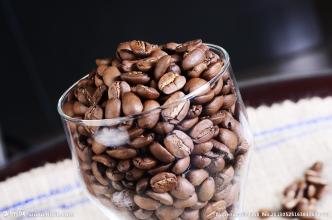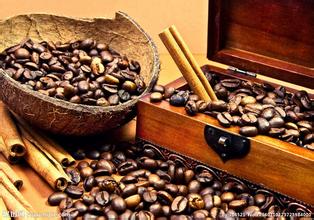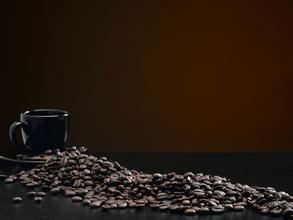Introduction to the flavor description of Colombian coffee beans produced by grinding scale
Colombia is rich in products, especially coffee, flowers, gold and emeralds are known as the "four treasures". In 1808, a priest introduced coffee to Colombia for the first time from the French Antilles via Venezuela. Today, the country is the second largest coffee producer after Brazil, the world's largest exporter of Arabica coffee beans and the world's largest exporter of washed coffee beans. Colombian coffee is often described as silky and smooth. Of all the coffees, it is the most balanced, soft, smooth and ready to drink, and it has won praise that no other coffee can match: known as "green gold".
Colombian coffee is divided into more than 200 grades, which means that the coffee is very regional. The country's coffee-producing areas are located in the Andes, where the climate is mild and the air is humid. Colombia has three Codiera mountains running north and south, right into the Andes. Coffee is grown along the highlands of these mountains. The mountain steps provide a diverse climate, where the whole year is the harvest season, and different kinds of coffee ripen at different times. And fortunately, unlike Brazil, Colombia doesn't have to worry about frost. These beautiful coffee beans can grow as elegantly as rich children with emeralds and neck collars, making every part of their body bold, rich and free to absorb the essence of heaven and earth, diving back and forth in the Andes and growing up calmly.
Colombian coffee has a bitter experience, it is as astringent as life, but bitterness is necessary in life, and the last fragrance at the root of the tongue is a thorough recollection of the past. Looking back on the hardship in the past, I will feel its sweetness and warmth even more, and I want to let the mood stop in the consciousness that begins to awaken for a long time. Suffering is pain, clear and quiet, the last fragrance has become a kind of spiritual victory.
Green, green, green and fragrant.
Columbia Coffee is a representative and excellent variety of Arabica coffee. It is a traditional deep-roasted coffee with a strong and memorable flavor.
Colombia, located in the northwest of South America, is a beautiful country with a long history. Indians have lived on this land since ancient times. It was colonized by Spain in 1531 and gained independence in 1819. It was renamed in 1886 to commemorate Columbus, the discoverer of the American continent. Colombia has beautiful mountains and rivers, beautiful scenery, pleasant climate, spring all year round, fresh air and refreshing air. Walking in the streets of Bogota, the capital, I feel relaxed and happy. The weeping willow with green branches and green leaves swayed in the air with the breeze; the tall and straight palm trees, like ancient copper-skinned giants, lined up with large umbrellas to greet visitors from afar; the blooming kapok tree opened its bright red leaves, as if holding a fiery heart to greet friends.
Colombia is rich in products, especially coffee, flowers, gold and emeralds are known as the "four treasures". In 1808, a priest introduced coffee to Colombia for the first time from the French Antilles via Venezuela. Today, the country is the second largest coffee producer after Brazil, the world's largest exporter of Arabica coffee beans and the world's largest exporter of washed coffee beans. Colombian coffee is often described as silky and smooth. Of all the coffees, it is the most balanced, soft, smooth and ready to drink, and it has won praise that no other coffee can match: known as "green gold".

Important Notice :
前街咖啡 FrontStreet Coffee has moved to new addredd:
FrontStreet Coffee Address: 315,Donghua East Road,GuangZhou
Tel:020 38364473
- Prev

Introduction to the description and treatment of taste and flavor in the growing environment of coffee beans in Rwanda
Rwanda has been growing coffee since colonial times. Although the crops are mainly coffee, the quality of coffee produced in Rwanda is not outstanding, and its status in the coffee world is low, and few people pay attention to it. Most of the coffee varieties grown in Rwanda are bourbon. Rwanda, known as the country of Thousand Hills, has a high-altitude mountain environment, fertile volcanic soil and abundant precipitation.
- Next

Introduction to the taste of variety treatment in the grinding scale production area of Hawaiian Kona coffee beans
Kona coffee is indeed a treasure in the world and is not easy to find. The real Hawaiian Kona coffee has the sweetness of caramel, which makes people enjoy the unique pleasure and leads you slowly into the detached state of tasting coffee. Of all the coffee producers, Hawaii has the most stringent management of the coffee industry, the highest labor costs and the best level of investment. Coffee from Hawaii
Related
- Detailed explanation of Jadeite planting Land in Panamanian Jadeite Manor introduction to the grading system of Jadeite competitive bidding, Red bid, Green bid and Rose Summer
- Story of Coffee planting in Brenka region of Costa Rica Stonehenge Manor anaerobic heavy honey treatment of flavor mouth
- What's on the barrel of Blue Mountain Coffee beans?
- Can American coffee also pull flowers? How to use hot American style to pull out a good-looking pattern?
- Can you make a cold extract with coffee beans? What is the right proportion for cold-extracted coffee formula?
- Indonesian PWN Gold Mandrine Coffee Origin Features Flavor How to Chong? Mandolin coffee is American.
- A brief introduction to the flavor characteristics of Brazilian yellow bourbon coffee beans
- What is the effect of different water quality on the flavor of cold-extracted coffee? What kind of water is best for brewing coffee?
- Why do you think of Rose Summer whenever you mention Panamanian coffee?
- Introduction to the characteristics of authentic blue mountain coffee bean producing areas? What is the CIB Coffee Authority in Jamaica?

